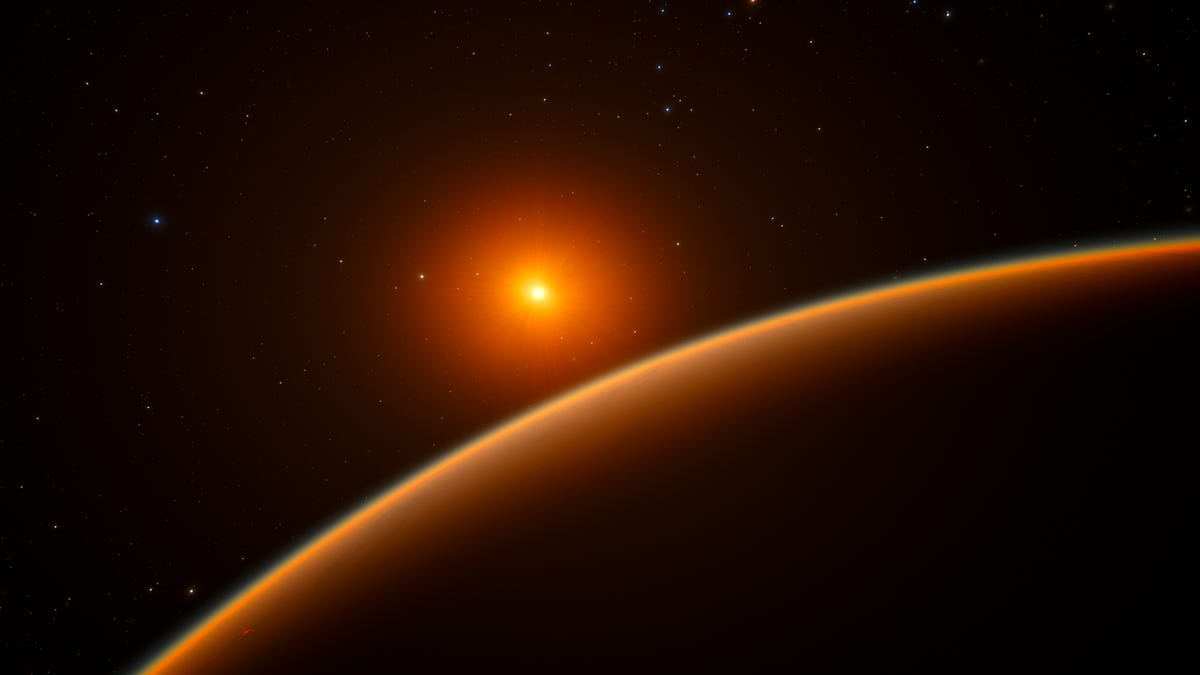Newfound exoplanet the latest hot place to look for aliens
The list of planets worth checking for signs of life keeps growing. Another super-Earth in our galactic district has just made it to the top of the chart.

Exoplanet discoveries in the past decade have made it clear there are plenty of other solar systems, but in the last year we've increasingly spotted new worlds that indicate there may be plenty of other Earths out there too.
On Wednesday, a newly discovered and relatively nearby planet vaulted toward the top of the growing list of exoplanets worth a closer look for signs of alien creepy-crawlies or ... who knows?
The planet orbits a faint red dwarf star named LHS 1140 just 40 light-years away in the constellation Cetus, named after the sea monster. Astronomers say it's larger than Earth, but appears to be rocky and temperate and likely has an atmosphere.
"This is the most exciting exoplanet I've seen in the past decade," said Jason Dittmann of the Harvard-Smithsonian Center for Astrophysics (CfA). He's also lead author of a paper on the discovery (PDF link) to be published in Thursday's issue of the journal Nature. "We could hardly hope for a better target to perform one of the biggest quests in science -- searching for evidence of life beyond Earth."
This latest discovery comes within a year of the revelation that the nearest star beyond our sun, Proxima Centauri, is also orbited by an Earth-size planet, and less than two months after we learned the Trappist-1 system boasts a whopping seven such planets.
The prospects for spotting signs of life on super-Earth LHS 1140-b are even better, because unlike with Proxima b, we're aligned at a nearly perfect angle to observe it as it passes in front of its star every 25 days.
Proxima Centauri, Trappist-1 and LHS 1140 are all dwarf stars, which means daylight on any orbiting planets is likely a little more dim than on Earth. A problem with these smaller stars is that they tend to blast their systems with frequent flares of radiation in the earlier part of their lives. Part of what has scientists so excited about LHS 1140 is that it spends less energy sterilizing its neighborhood than Trappist-1.
"The present conditions of the red dwarf are particularly favorable -- LHS 1140 spins more slowly and emits less high-energy radiation than other similar low-mass stars," team member Nicola Astudillo-Defru from the Geneva Observatory explained in a statement.
Even if LHS 1140 released a lot of radiation earlier in its existence, researchers point to the fact that the nearby super-Earth is so large and dense -- its diameter is 40 percent more than our planet and it's 6.6 times more massive -- as evidence it may have been able to defend itself when the star was younger and more prone to flare-ups.
They say its large size indicates an ocean of lava could have roiled on its surface for millions of years, feeding a radiation-blocking atmosphere with steam. That cycle could preserve water on the planet, enhancing its potential to host life.
"Right now we're just making educated guesses about the content of this planet's atmosphere," Dittmann said. "Future observations might enable us to detect the atmosphere of a potentially habitable planet for the first time. We plan to search for water, and ultimately molecular oxygen."
Plans are already in place to observe the system with NASA's Hubble Space Telescope to try and discern just how much radiation is being showered upon LHS 1140-b. It's also likely to be a prime target for next-generation telescopes scheduled to begin coming online next year.
"This planet will be an excellent target for the James Webb Space Telescope when it launches in 2018, and I'm especially excited about studying it with the ground-based Giant Magellan Telescope, which is under construction," said co-author David Charbonneau of the CfA.
Of course, if these discoveries keep coming at us so quickly, it will be one of many targets by that time. Fortunately, next-generation telescopes are built in such a way that they aren't susceptible to whiplash.
Crowd Control: A crowdsourced science fiction novel written by CNET readers.
CNET en Español: Get all your tech news and reviews in Spanish.

